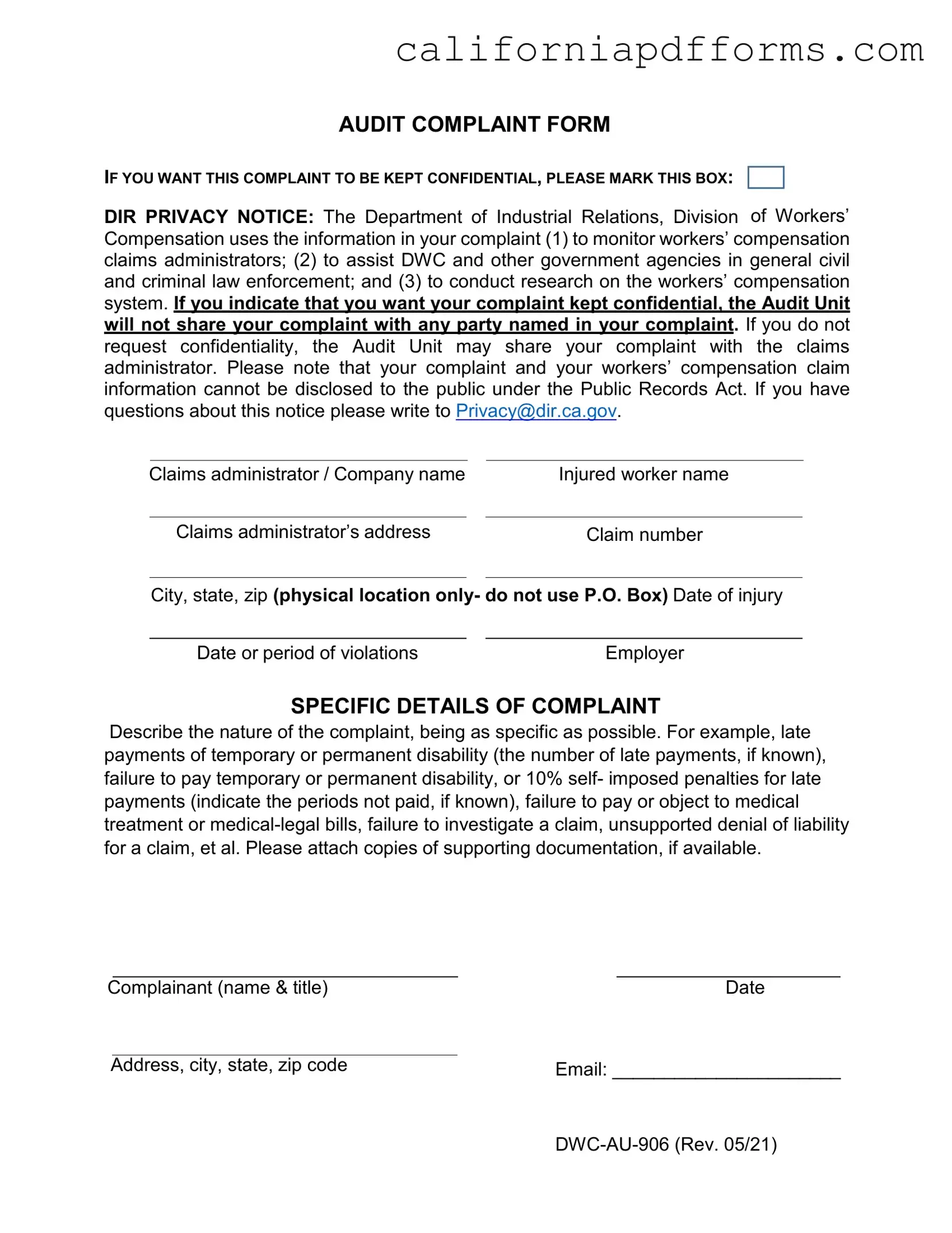The California Audit Complaint Form is designed to allow individuals to report issues related to workers' compensation claims. This form helps the Department of Industrial Relations (DIR) monitor claims administrators, assists in law enforcement, and supports research on the workers' compensation system. By submitting this form, complainants can highlight specific problems they have encountered, such as late payments or denial of claims.
How can I ensure my complaint remains confidential?
If you wish for your complaint to be kept confidential, you must mark the designated box on the form. When confidentiality is requested, the Audit Unit will not share your complaint with any party named in it. This is an important option for those who may fear retaliation or other negative consequences from their claims administrators.
When filling out the form, you will need to provide several pieces of information:
-
Claims administrator or company name
-
Claims administrator’s address
-
Your name as the injured worker
-
Your claim number
-
The physical location of the claim (city, state, zip)
-
The date of your injury
-
The date or period of the violations
-
Your employer's name
Additionally, you should describe the nature of your complaint in detail, including any specific incidents or issues you have faced.
The form can be used to report a variety of complaints related to workers' compensation claims. Common issues include:
-
Late payments of temporary or permanent disability
-
Failure to pay temporary or permanent disability
-
Self-imposed penalties for late payments
-
Failure to pay or object to medical treatment or medical-legal bills
-
Failure to investigate a claim
-
Unsupported denial of liability for a claim
Providing specific details about your complaint will help in the investigation process.
What should I do if I have supporting documentation?
If you have any supporting documentation related to your complaint, it is essential to attach copies when you submit the form. This documentation can include payment records, correspondence with the claims administrator, or any other relevant materials that can substantiate your claims.
How is my complaint handled once submitted?
Once you submit your complaint using the California Audit Complaint Form, the Audit Unit will review the information provided. If your complaint does not remain confidential, they may share it with the claims administrator for further investigation. The information you provided will be used to monitor compliance and may assist in enforcement actions if necessary.
If you have questions regarding the California Audit Complaint Form or the process, you can reach out to the Department of Industrial Relations by emailing Privacy@dir.ca.gov. They will be able to provide you with additional guidance and address any concerns you may have about your complaint or the confidentiality of your information.
